- V
- GF
- NS
- DF
- View Recipe Key
Bucatini All’Amatriciana
Bucatini All’Amatriciana
Bucatini All’Amatriciana takes just a handful of ingredients and less than 30 minutes to make. It’s an easy Italian classic you’ll fall in love with at first bite!
This post contains affiliate links. Full disclosure is at the bottom of the article.
Bucatini All’Amatriciana is one of a long list of super simple yet amazingly good Italian pasta dishes. This dish is very high on my list of favorite weeknight meals—but it’s so incredibly good that I also like to serve it to company. A dish that takes less than 30 minutes to make but elicits passionate praise from guests? That’s a win in my book!
Amatriciana sauce is named after Amatrice, located in the region of Lazio, right in the heart of Italy. It is one of the best-known Roman and Italian sauces and was even named a prodotto agroalimentare tradizionale, or a traditional Italian food product, by the Italian government. The sauce is most often served with bucatini, a thick, spaghetti-like pasta with a hole running through the center. Bucatini is notorious for being hard to eat: its thickness makes it tricky to whirl around a fork, and the ends of the strands tend to stubbornly whip up, splashing sauce around in the process. But while it might not be the best dish to order on a first date, I think the shape and heartiness of bucatini makes it fun to eat.
The traditional recipe for Bucatini All’Amatriciana uses just a few ingredients, and as with most Italian recipes, the quality of the products you use will directly influence the deliciousness of the resulting dish.
At the foundation of Amatriciana sauce is guanciale. Guanciale is a cured pork product, just as pancetta is, but it comes from a different part of the pig: cheeks (or jowls) for guanciale versus belly for pancetta. Guanciale is fattier and flavor stronger than pancetta, yet it has a finer, more delicate texture. The first time I made Amatriciana at home, I used a vacuum-wrapped pork cheek I’d brought back from a trip to Rome—no wonder I fell in love with it.
Slices of Italian guanciale, the cured pork product traditionally used to make Bucatini All’Amatriciana pasta.
Some of the ingredients of the sauce are argued over among cooks. My Italian friend Eleonora, who generously provided me with the baseline of this recipe, tells me that you can spark a heated debate by asking Italians whether or not they use onion in their Amatriciana sauce! Because Eleonora advised me to use onion, I use it—and I enjoy the extra layer of flavor it brings to the sauce. I also like to add a pinch of crushed red pepper to add some punch, but you could stir in a good grind of freshly ground black pepper if you prefer.
The cheese used in Amatriciana sauce is Pecorino—and this is non-negotiable. Pecorino cheese has a specific, salty taste that seasons and rounds up the flavor of the sauce in a very unique way. For the best flavor, buy a block of Pecorino and grate it very finely, preferably using a Microplane.
Finally, Amatriciana sauce contains a healthy quantity of olive oil, and be sure to use a top-quality, fruity variety of extra-virgin olive oil.
Just like Cacio e Pepe, Bucatini All’Amatriciana is a memorable Italian dish that deserves a spot in your repertoire. Make Bucatini All’Amatriciana a few times, and you’ll quickly become renowned for it. You don’t need to tell anyone how easy it is to make!
Can Amatriciana sauce be served with any other type of pasta?
I’m not sure what a nonna would say, but you have my blessing. If you can’t find bucatini pasta, the easiest swap is a thick spaghetti (one with a suggested cooking time of 11 to 13 minutes). I’d say Amatriciana sauce is best served with long pasta, but if rigatoni or penne happens to be what you have on hand, I won’t judge.
Dry bucatini pasta
Are there acceptable substitutes for guanciale in Amatriciana sauce?
Guanciale is cured pork jowl (or cheek). To make guanciale, pork jowl is rubbed with salt and spices then cured for a few weeks. It’s a very fatty and very flavorful cured pork product that provides a wonderful depth to classic Italian pasta dishes, such as Carbonara or Amatriciana.
As a specialty item, guanciale can be hard to find. Ask for it in gourmet grocery stores and Italian delis. If you can’t find guanciale, fear not: you can still make Bucatini All’Amatriciana. Pancetta is a more readily available cured pork product. Made with pork belly, pancetta is similar to bacon, but it is not smoked, making a huge difference in flavor. Pancetta is often sold thinly sliced, but for Amatriciana sauce, you want to find cubed pancetta or ask your charcuterie counter to slice pancetta about 1/3 inch (1 cm) thick. You’ll then dice these thick pancetta slices to use in this recipe.
Can Amatriciana sauce be made ahead of time?
Yes! Amatriciana can be made ahead of time. Simply simmer the sauce right up to the point where you’d add the cooked pasta. Let the sauce cool, and then refrigerate it in an airtight container for up to 4 days. To serve, gently reheat the sauce in a large skillet while the pasta cooks. Transfer the pasta to the sauce and finish the dish with the pecorino and olive oil as indicated.
Even when making the sauce ahead of time, it’s important to cook the bucatini right before serving. Bucatini All’Amatriciana is at its very best when it’s al dente and glistening fresh with the sauce.
So I can’t use Parmigiano Reggiano in Amatriciana sauce? Really?
Hard Italian cheeses all have a different personality, and they tend to shine when you use them in dishes from the same regions where the cheeses are made. Bucatini All’Amatriciana comes from Amatrice, a town in the province of Lazio that produces Pecorino cheese. Parmigiano Reggiano comes from a different Italian province and is made from cow’s milk; Pecorino is made from sheep’s milk. Pecorino cheese also has a very different flavor compared to Parmigiano Reggiano. Pecorino’s flavor is sharp, peppery, and very salty, whereas Parmigiano Reggiano has a rich, smooth flavor.
In other words, Pecorino is a unique product largely responsible for Amatriciana sauce’s unique flavor. If you use any other cheese, the dish may taste very good, but it won’t be authentic Bucatini All’Amatriciana.
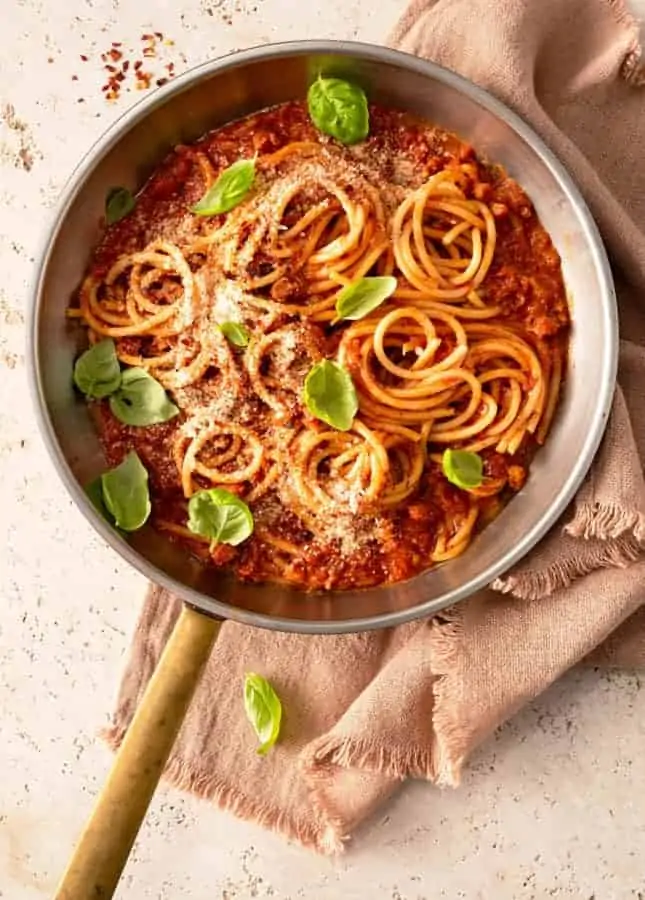
Bucatini All’Amatriciana
Ingredients
- ¼ cup extra-virgin olive oil, divided
- 7 oz diced guanciale or pancetta (about 1 cup)
- 1 small onion, minced
- ½ tsp crushed red pepper flakes
- ½ cup dry white wine, such as Pinot Grigio
- 14 oz crushed tomatoes (a small can, or half a large can)
- 6 oz grated Pecorino-Romano cheese (about 1 ½ cups)
- 1.1 lb dry bucatini pasta, or substitute spaghetti
Instructions
- In a large saute pan set over medium heat, heat 2 tbsp (30 ml) of the olive oil large, then add the guanciale or pancetta and fry until golden and crisp. A lot of fat will render in the pan, but that’s ok, this will flavor the sauce and give it a silky texture. Add the onion and crushed red pepper. When the onion is translucent, pour in the wine and bring to a boil until completely evaporated. Add the crushed tomatoes and cook, uncovered, for 10 minutes, until the sauce is thick. Season lightly with a pinch of sea salt, keeping in mind the Pecorino will season the sauce as well. Lower the heat to the minimum to keep the sauce warm while the pasta cooks.
- If you’re making the Amatriciana sauce ahead of time, you can take it off the heat now and let it cool to room temperature. Transfer it to an airtight container and refrigerate for up to 4 days.
- While the Amatriciana sauce is simmering, bring a large pot of water to a rolling boil, salt generously, then add the bucatini pasta to the water. Set a timer for 1 minute less than the cooking time specified by the manufacturer. Using tongs, gently move the pasta around during the first few minutes to make sure the bucatini pasta doesn’t clump together. Shortly before the pasta is ready, scoop up and save 1/2 cup (125 ml) of starchy pasta cooking water.
- Drain the bucatini pasta, then transfer it to the saute pan with the Amatriciana sauce. The sauce should still be set over low heat. (If you made the Amatriciana sauce ahead of time, reheat it while the pasta is cooking.) Add the grated Pecorino cheese, the remaining extra-virgin olive oil (2 tbsp/30 ml) and the reserved pasta cooking water. Using a spatula, stir the pasta to melt and incorporate the Pecorino.
- Serve Bucatini All’Amatriciana piping hot, garnished with a sprinkle more grated Pecorino cheese, if desired.
Did you make this?
Tell me how you liked it! Leave a comment or take a picture and tag it with @foodnouveau on Instagram.
This site participates in the Amazon Associates Program, an affiliate advertising program designed to provide a means for the site to earn fees by linking to Amazon and affiliated sites.
If you click on an affiliate link, I may earn advertising or referral fees if you make a purchase through such links, at no extra cost to you. This helps me create new content for the blog–so thank you! Learn more about advertising on this site by reading my Disclosure Policy.
Author: Marie Asselin

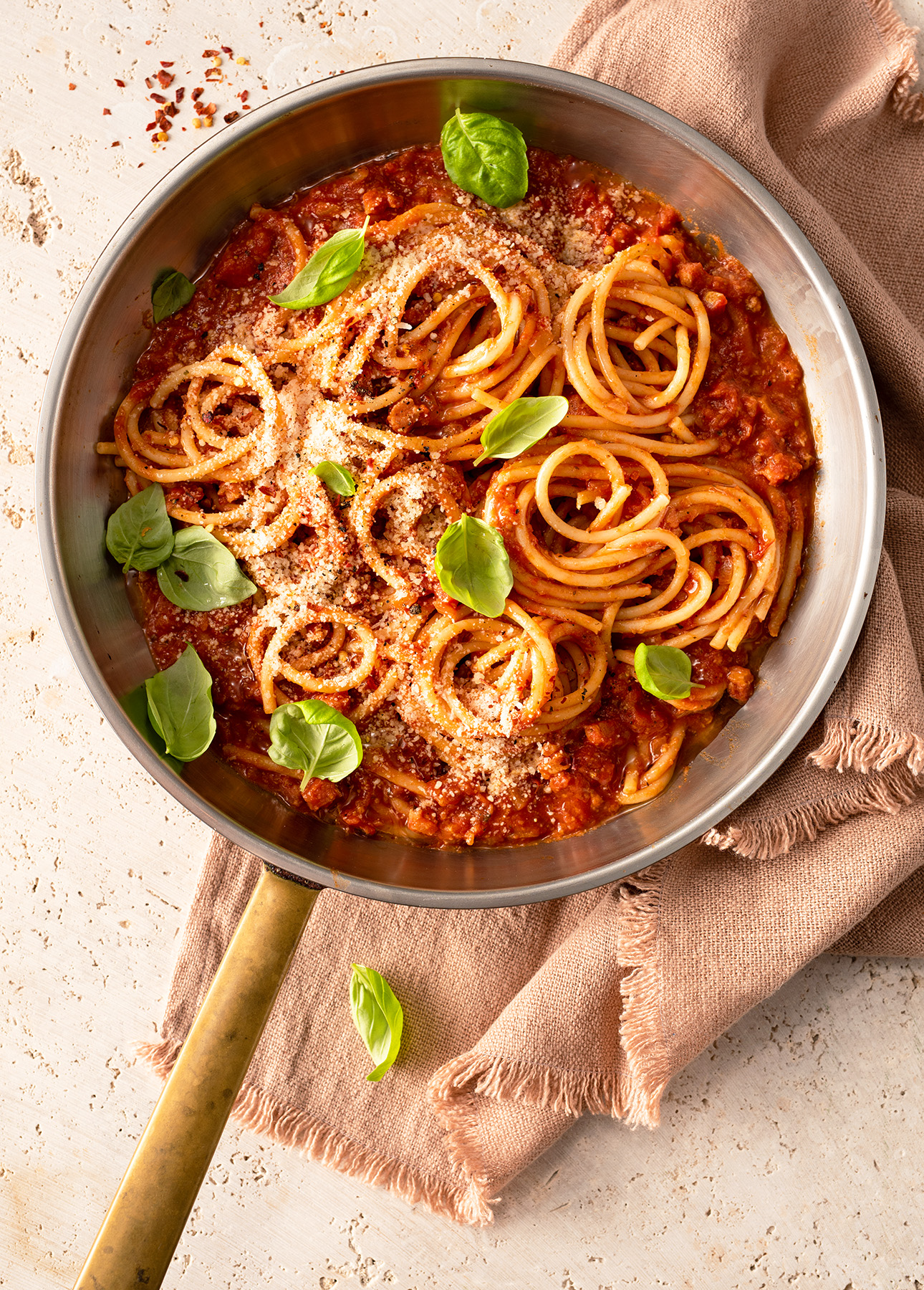

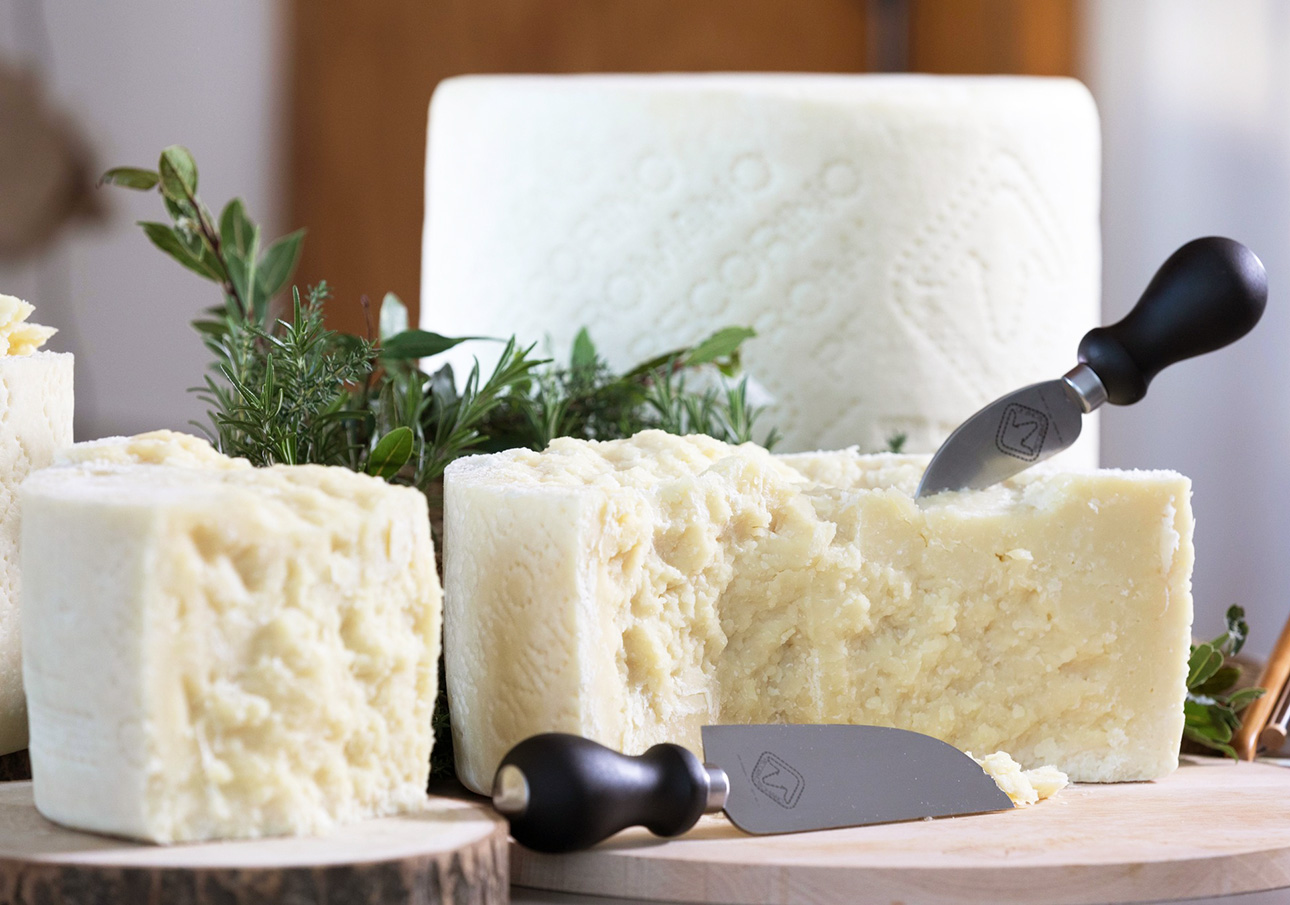

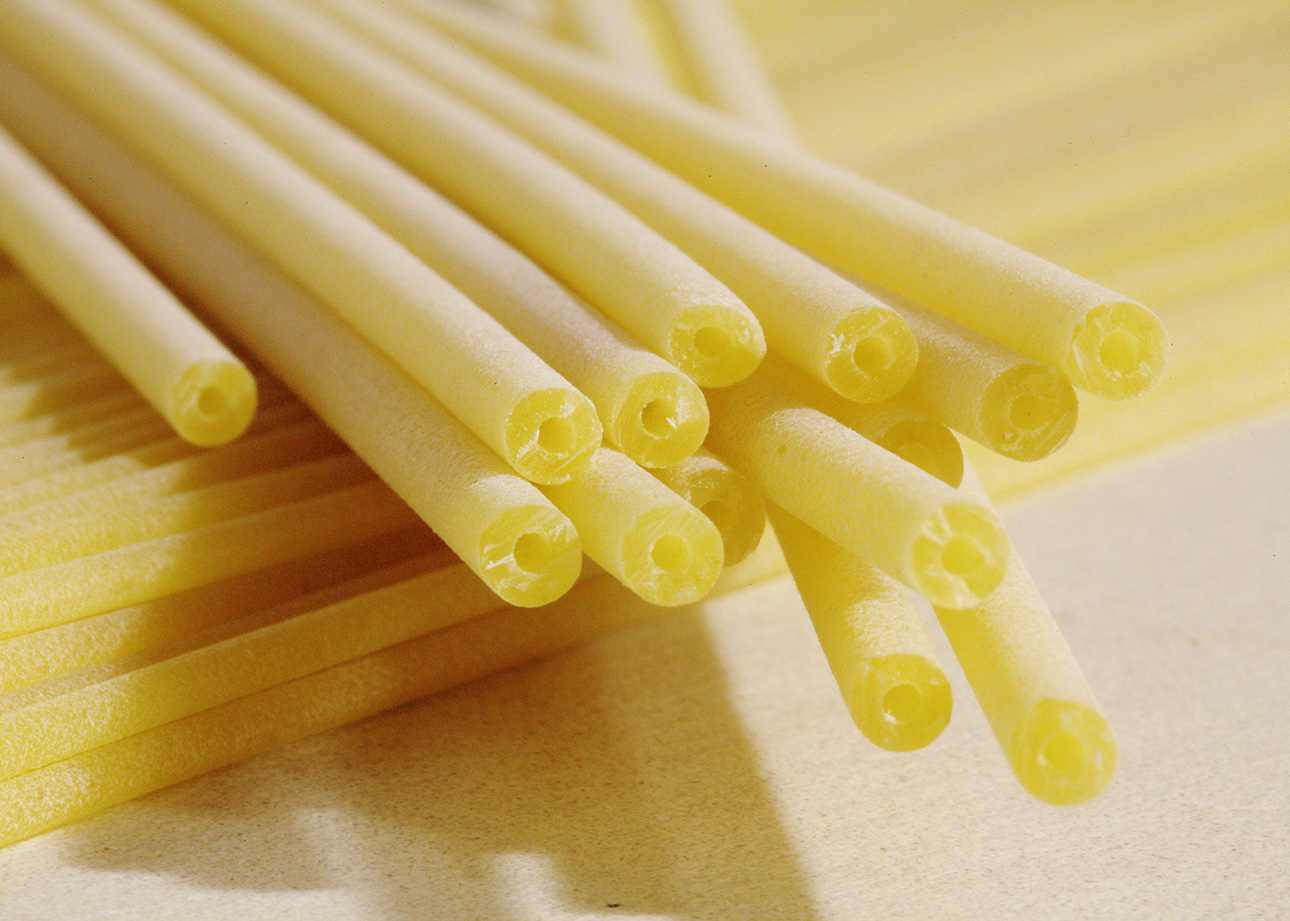
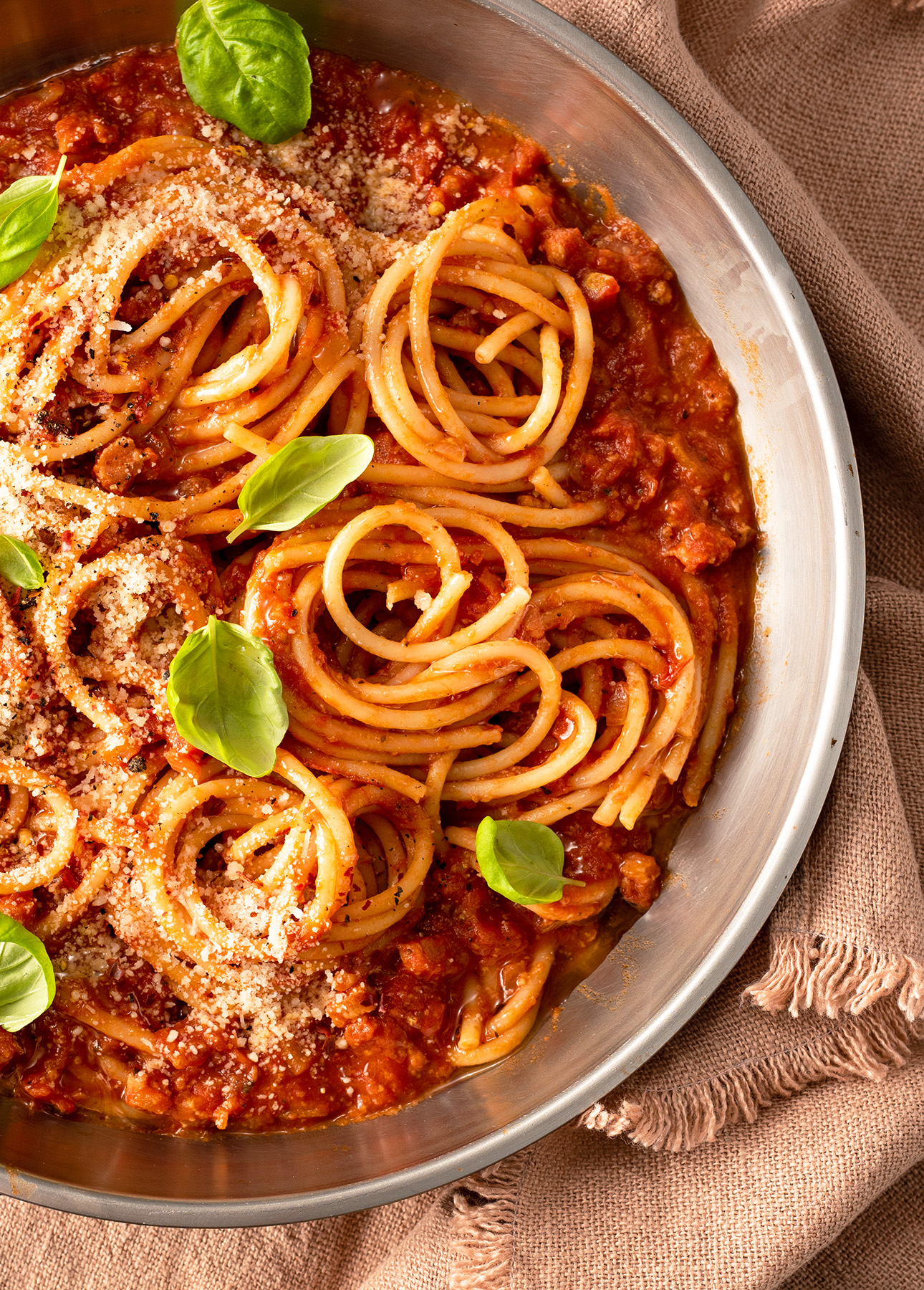

What beautiful, simple dish, coming from such wonderful people. Your photos are lovely too. Like you, I’m keeping them in my thoughts hoping for the best in this difficult period.
Ciao Marie!
I also made Amatriciana but I decided to wait to post. I have a different story to tell but I thought it more apropos at a later date. It is so sad but I’m sure the Italian spirit will not be contained and they will rebuild. Your photos are lovely. Buona giornata!